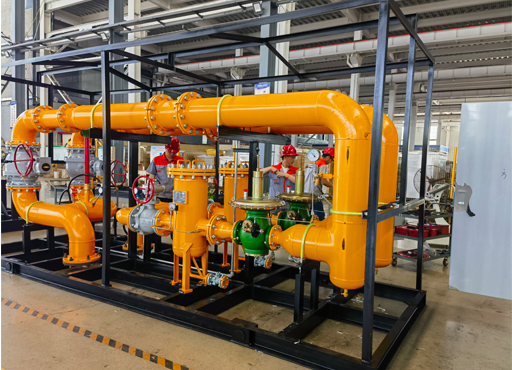
Aug . 14, 2024 10:46
Back to list
Understanding Gas Pressure Regulation Systems for Safe and Efficient Energy Management
Understanding Gas Pressure Reducers Their Importance and Functionality
Gas pressure reducers, commonly termed gas regulators, are essential components in a variety of applications, ranging from industrial processes to residential heating. Their primary function is to reduce and stabilize the pressure of gases coming from a storage or supply source, ensuring safe and efficient use in various systems.
Functionality of Gas Pressure Reducers
A gas pressure reducer works by allowing gas to flow from a high-pressure source, such as a gas cylinder or pipeline, and reducing it to a lower, more manageable pressure that can be safely used in applications. This is crucial because many gas systems are designed to operate at specific pressures. Too high a pressure can lead to equipment damage, leaks, or even dangerous explosions. Conversely, too low a pressure may cause inefficient operation or failure to ignite in combustion applications, such as stoves and heaters.
Components of a Gas Pressure Reducer
Typically, a gas pressure reducer consists of several key components
1. Inlet and Outlet Ports These are where the high-pressure gas enters the regulator and the reduced-pressure gas exits it.
2. Diaphragm or Piston This component responds to changes in pressure. When the gas enters the reducer, it pushes against the diaphragm or piston, which moves accordingly and adjusts the valve to regulate the flow.
.
4. Safety Features Most modern gas regulators include safety features, such as pressure relief valves, to prevent over-pressurization and potential accidents.
مخفض ضغط الغاز

Types of Gas Pressure Reducers
There are various types of gas pressure reducers, suited for different applications. Some common types include
- Single-stage Regulators These are typically used in low-pressure applications where the pressure drop from inlet to outlet is not significant. They are straightforward and cost-effective.
- Two-stage Regulators These are designed for applications where a more consistent outlet pressure is required despite fluctuations in inlet pressure. They provide better precision and stability, making them ideal for sensitive applications.
- Electronic Regulators Modern technology has also introduced electronic gas pressure regulators that use sensors and automated controls. These allow for real-time pressure monitoring and adjustment, enhancing safety and efficiency.
Applications of Gas Pressure Reducers
Gas pressure reducers find applications across numerous industries. In residential settings, they are critical in gas appliances such as ovens, furnaces, and water heaters, ensuring that consumers can safely enjoy the benefits of natural gas.
In industrial contexts, pressure reducers are vital in processes involving gases like oxygen, nitrogen, or argon, commonly used in manufacturing, welding, and food preservation. They ensure that gases are delivered at the correct pressures required for specific chemical reactions or processes.
Conclusion
Gas pressure reducers play an indispensable role in the safe handling and usage of gases in various applications. Understanding their functionality, components, and types can help users select the right gas regulator for their needs, ensuring not only efficiency but also safety. As industries continue to evolve and innovate, the importance of reliable and precise gas pressure regulation will undoubtedly remain a top priority in maintaining operational integrity and safety standards.
Latest news
-
Safety Valve Spring-Loaded Design Overpressure ProtectionNewsJul.25,2025
-
Precision Voltage Regulator AC5 Accuracy Grade PerformanceNewsJul.25,2025
-
Natural Gas Pressure Regulating Skid Industrial Pipeline ApplicationsNewsJul.25,2025
-
Natural Gas Filter Stainless Steel Mesh Element DesignNewsJul.25,2025
-
Gas Pressure Regulator Valve Direct-Acting Spring-Loaded DesignNewsJul.25,2025
-
Decompression Equipment Multi-Stage Heat Exchange System DesignNewsJul.25,2025

